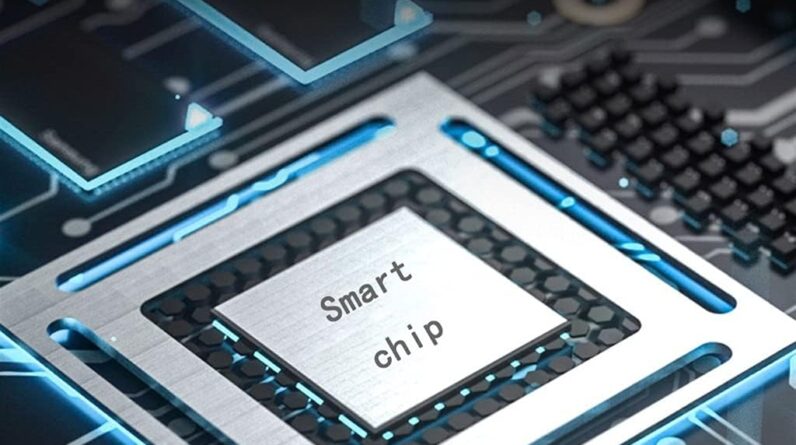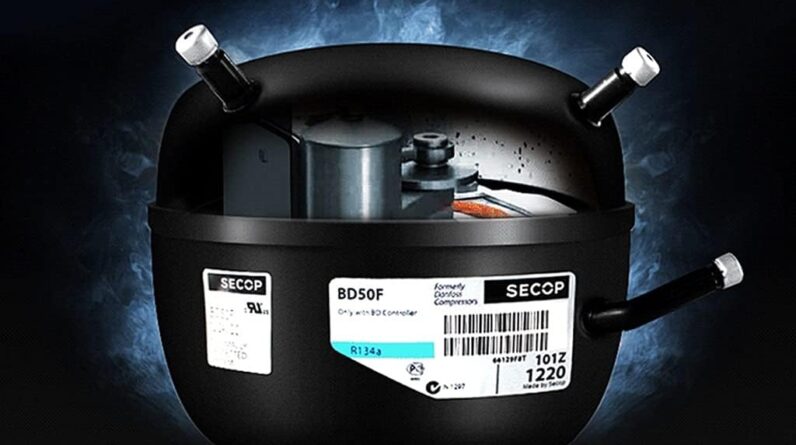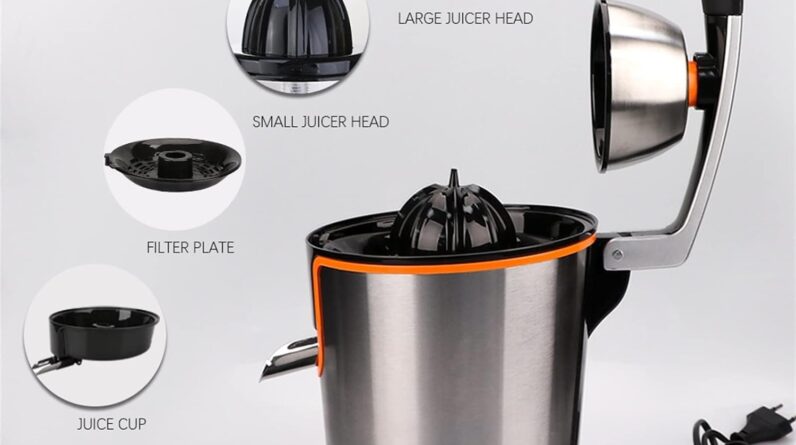
If you’ve ever come face to face with a dishwasher that refuses to start its cleaning cycle, then this article is here to save the day! Discover practical tips and tricks that will not only help you troubleshoot the issue but also provide you with the necessary steps to fix your dishwasher on your own. From checking power connections to inspecting the door latch, you’ll find all the information you need to prevent and successfully resolve your dishwasher’s starting woes. So say goodbye to dirty dishes piling up in the sink and say hello to a smoothly running dishwasher!
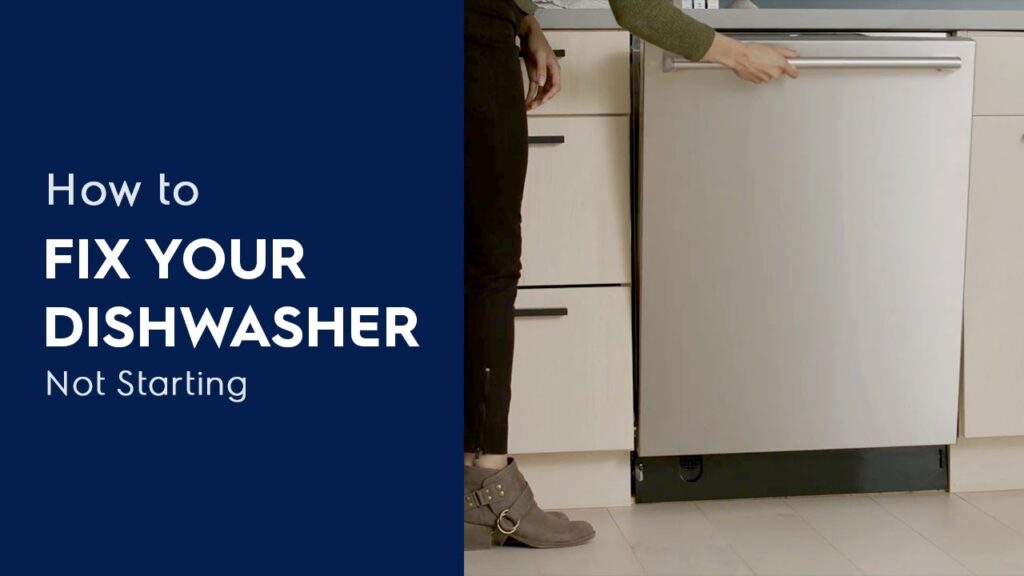
This image is property of i.ytimg.com.
Check the Power Supply
Check the Power Outlet
The first step in troubleshooting a dishwasher that is not starting is to check the power outlet. Make sure that the outlet is functioning correctly by plugging in another appliance or device to see if it works. If the other appliance works, then the power outlet is not the issue. However, if the other appliance does not work, then you may need to check the circuit breaker or fuse box to ensure that there is power to the outlet. Resetting the breaker or replacing a blown fuse could solve the issue.
Inspect the Power Cord
After confirming that the power outlet is functioning correctly, the next step is to inspect the power cord of the dishwasher. Check for any visible damage to the cord, such as fraying or cuts. If you notice any damage, it is important to replace the power cord to avoid any potential safety hazards. Additionally, make sure that the power cord is securely plugged into the dishwasher, as a loose connection could prevent the appliance from starting.
Test the Outlet with Another Appliance
If the power outlet and power cord appear to be in good condition, but the dishwasher is still not starting, it is recommended to test the outlet with another appliance. Plug in a different appliance, such as a lamp or phone charger, and see if it works. If the second appliance works in the same outlet, then the issue lies with the dishwasher. However, if the second appliance also does not work, then the problem might be with the outlet itself or the electrical wiring in your home. In this case, it is advisable to call a professional electrician to investigate and resolve the issue.
Verify the Control Settings
Check the Control Lock
Sometimes, a dishwasher may not start due to the control lock feature being enabled. This feature is designed to prevent accidental button presses and can be easily activated or deactivated by pressing a specific button or combination of buttons on the control panel. Refer to the dishwasher’s user manual to identify the control lock button or combination and ensure that it is not engaged. Disabling the control lock should allow you to start the dishwasher.
Examine the Timer/Delay Start
Another reason why your dishwasher may not be starting is if the timer or delay start feature is active. Check the control panel for any indication of a timer or delay start setting. If the dishwasher is set to start at a specific time, it will not initiate a cycle until that time is reached. Adjust the timer or disable the delay start feature if necessary, and try starting the dishwasher again.
Inspect the Cycle Selection
Ensure that you have selected a specific cycle for the dishwasher to run. Some dishwashers have multiple cycle options, such as “Normal,” “Heavy,” or “Quick Wash.” If no cycle is selected, the dishwasher will not start. Carefully review the available cycle options and press the appropriate button for the desired cycle. Once a cycle is selected, the dishwasher should initiate the chosen cycle and begin operating.
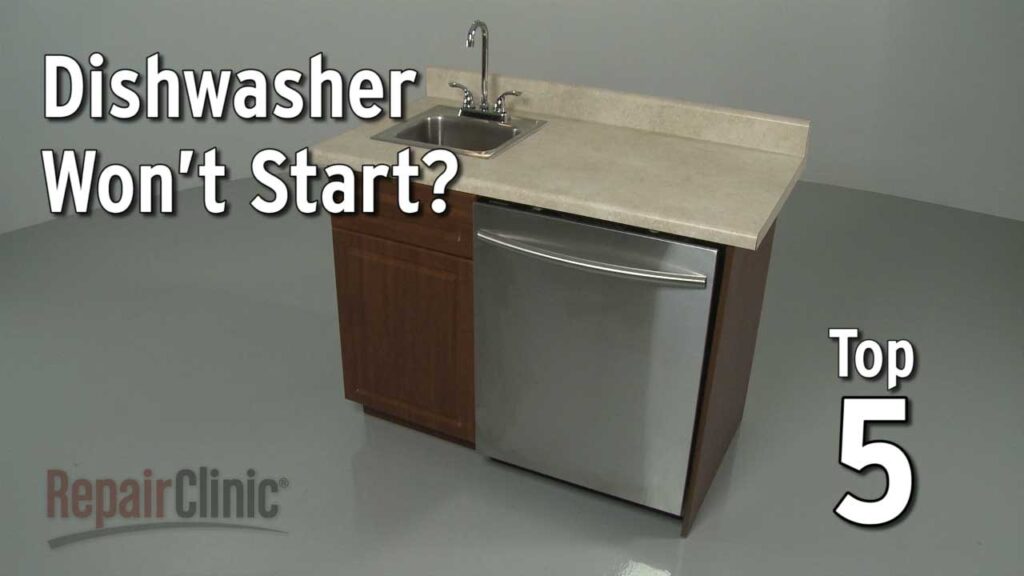
This image is property of i.ytimg.com.
Ensure Proper Door Closure
Check for Door Misalignment
A common reason why a dishwasher may not start is due to misalignment of the door. When the door is not properly aligned and securely closed, the dishwasher’s safety mechanism may prevent it from starting. Inspect the door for any signs of misalignment, such as gaps or protrusion. If misalignment is detected, you may need to adjust the hinges or latch mechanism to ensure that the door closes tightly. Once the door is properly aligned, the dishwasher should start as expected.
Inspect the Door Latch
The door latch is a crucial component that ensures the dishwasher door remains closed during operation. If the door latch is damaged or not functioning correctly, it can prevent the dishwasher from starting. Take a close look at the door latch mechanism and check for any signs of damage or wear. If you notice any issues, such as a broken latch or a loose fitting, you may need to replace the latch to enable proper door closure and allow the dishwasher to start.
Clean the Door Gasket
The door gasket, also known as the door seal, plays a vital role in creating a watertight seal when the dishwasher is in use. Over time, the door gasket can accumulate dirt, debris, and residue, which can prevent the door from closing properly. Inspect the door gasket and clean it thoroughly using a damp cloth or mild detergent. Be sure to remove any debris or buildup along the gasket’s entire length. Once the gasket is clean, close the door and attempt to start the dishwasher again.
Examine the Water Supply
Check the Water Tap
In order for a dishwasher to operate, it requires a sufficient water supply. Ensure that the water tap, which supplies water to the dishwasher, is fully turned on. Sometimes, the tap may accidentally be left partially closed or in the “off” position, preventing water from reaching the dishwasher. Verify that the water tap is completely open and try starting the dishwasher once more.
Inspect the Inlet Valve
The inlet valve controls the flow of water into the dishwasher. If the inlet valve is clogged or not functioning properly, it can hinder the dishwasher’s ability to start. Locate the inlet valve, typically found behind the lower access panel or beneath the dishwasher itself. Inspect the valve for any signs of damage or clogs. If necessary, clean the inlet valve or replace it entirely to restore proper water flow and enable the dishwasher to start.
Clean the Filter Screen
Dishwashers are equipped with a filter screen that traps debris and prevents it from clogging the internal components. Over time, this filter screen can become clogged itself, restricting the water flow and preventing the dishwasher from starting. Find and remove the filter screen, usually located at the bottom of the dishwasher, and clean it thoroughly. Make sure to remove any trapped debris or residue. Once the filter screen is clean and free of obstructions, reinstall it and attempt to start the dishwasher.
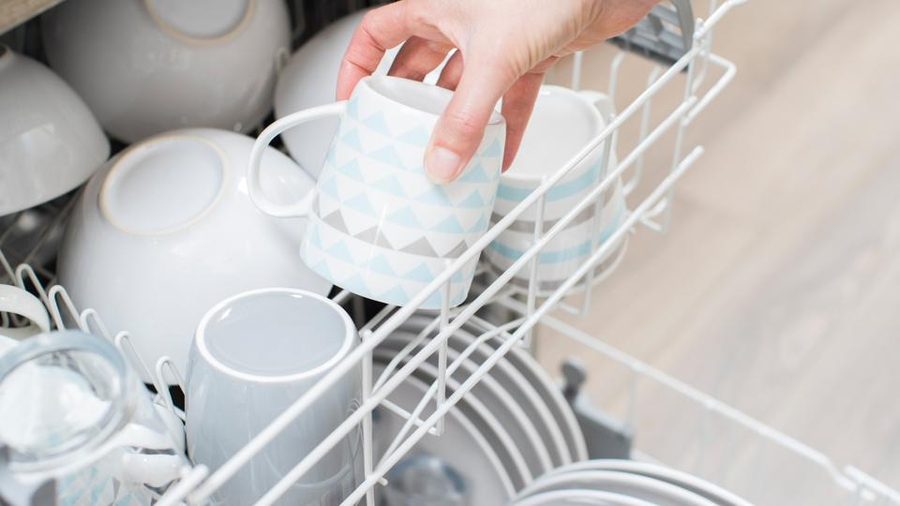
This image is property of thumbor.forbes.com.
Inspect the Float Switch
Locate the Float Switch
The float switch is a safety feature that prevents the dishwasher from overfilling with water. Located in the bottom of the dishwasher’s tub, the float switch utilizes a small, buoyant device to monitor the water level. If the water level is too high, the float switch will activate and prevent the dishwasher from starting. Locate the float switch in the dishwasher and visually inspect it for any signs of damage or obstruction.
Clean the Float Switch
Over time, the float switch can accumulate debris or residue, impairing its proper function. Clean the float switch thoroughly using a damp cloth or mild detergent to remove any buildup. Ensure that the float can move up and down freely without any hindrances. By cleaning the float switch, you can ensure that it operates correctly, allowing the dishwasher to start when necessary.
Test the Float Switch
In addition to cleaning the float switch, it is important to test its functionality. The float switch should be able to move up and down easily and should activate the proper safety mechanism if the water level is too high. Gently raise and lower the float to verify that it moves freely without any resistance. If the float switch does not function properly, it may need to be replaced in order to resolve the issue of the dishwasher not starting.
Troubleshoot the Control Panel
Reset the Control Panel
Sometimes, the control panel of a dishwasher can become frozen or unresponsive, preventing the appliance from starting. To troubleshoot this issue, try resetting the control panel. Locate the circuit breaker or fuse that supplies power to the dishwasher and switch it off. Leave it off for approximately five minutes, then switch it back on. This power cycling can often reset the control panel, allowing you to start the dishwasher as intended.
Inspect for Error Codes
Many modern dishwashers are equipped with error code displays that can provide valuable information about any issues or malfunctions. Check the control panel for any error codes or warning lights that may be displayed. Reference the dishwasher’s user manual or manufacturer’s website to interpret the meaning of the displayed error code. If necessary, follow the recommended troubleshooting steps to address the specific error and attempt to start the dishwasher again.
Replace the Control Board
If the control panel is unresponsive, displays error codes consistently, or the dishwasher still fails to start after performing the previous troubleshooting steps, it may be necessary to replace the control board. The control board is the electronic component responsible for controlling the dishwasher’s functions and cycles. Consult a professional technician or the manufacturer to determine the correct replacement control board for your specific dishwasher model.
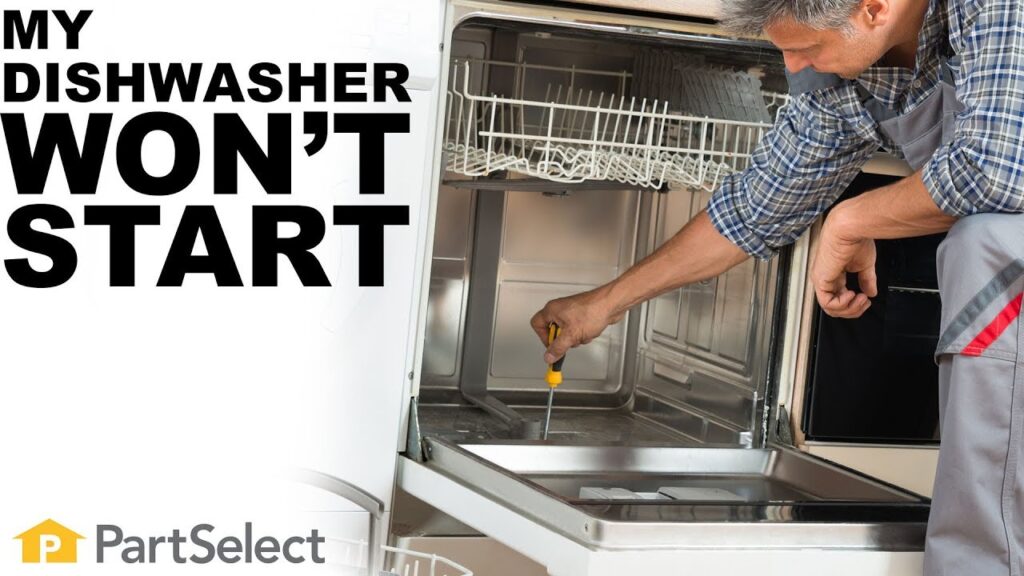
This image is property of i.ytimg.com.
Check the Thermal Fuse
Locate the Thermal Fuse
The thermal fuse is a safety device designed to prevent the dishwasher from overheating or sustaining any damage due to excessive heat. It is usually located in the control panel or on the main control board. Consult the dishwasher’s user manual or manufacturer’s documentation to locate the thermal fuse in your specific model.
Test the Fuse for Continuity
Using a multimeter set to the continuity or ohms function, test the thermal fuse for continuity. Disconnect the dishwasher from the power source before performing this test. Remove the thermal fuse from its location and touch the probes of the multimeter to the fuse’s terminals. If the multimeter doesn’t show continuity, it indicates that the thermal fuse is blown and needs to be replaced.
Replace a Blown Fuse
If the thermal fuse test reveals that it is blown, it is important to replace it with a new fuse of the same rating. The thermal fuse is a safety feature, and replacing it ensures the safe operation of the dishwasher. Consult the user manual or contact the manufacturer to obtain the correct replacement thermal fuse for your dishwasher model. Once the new thermal fuse is installed, reconnect the dishwasher to the power source and attempt to start it.
Inspect the Door Switch
Locate the Door Switch
The door switch is a small component that signals whether the dishwasher’s door is properly closed or not. It sends a signal to the control board to allow the dishwasher to start. Locate the door switch, which is typically found behind the control panel or near the door latch mechanism. Consult the user manual or manufacturer’s documentation for the precise location of the door switch in your dishwasher model.
Test the Door Switch
To test the functionality of the door switch, you will need a multimeter set to measure continuity. Disconnect the dishwasher from the power source before performing this test. Remove the door switch from its position and test the continuity by touching the multimeter probes to the switch’s terminals. If there is no continuity when the door is closed, or if there is continuity when the door is open, it indicates a faulty door switch that needs to be replaced.
Replace a Faulty Switch
If the door switch test confirms that it is faulty, it is essential to replace it with a new one. A malfunctioning door switch can prevent the dishwasher from starting, and replacing it will restore proper operation. Consult the dishwasher’s user manual or contact the manufacturer to obtain a compatible replacement door switch. Once the new door switch is installed, reconnect the dishwasher to the power source and check if it starts correctly.
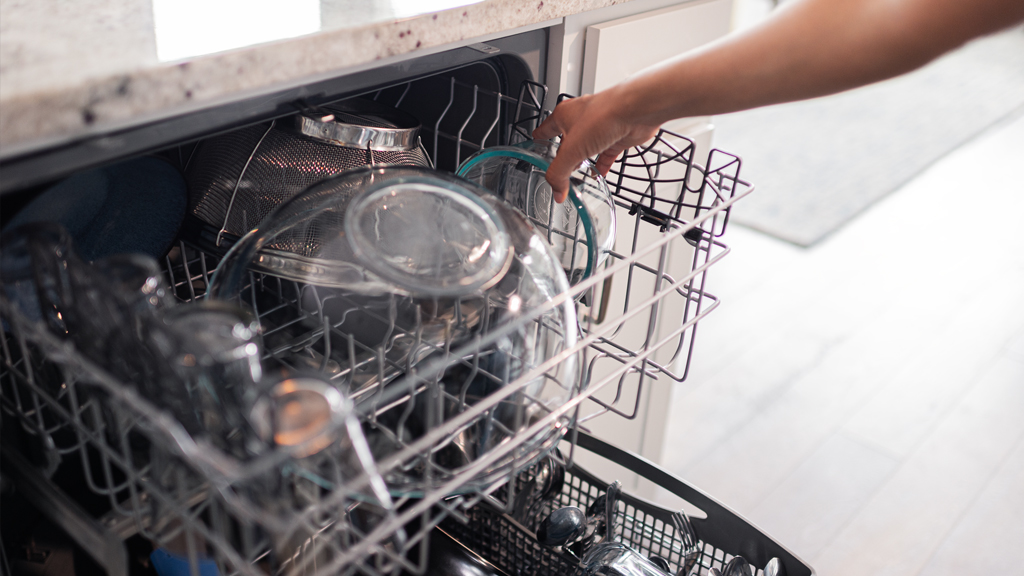
This image is property of images.ctfassets.net.
Clean the Spray Arms
Remove and Clean the Spray Arms
The spray arms in a dishwasher are responsible for distributing water and detergent during the cleaning cycle. Over time, the spray arms can become clogged with food particles, debris, or mineral deposits, hindering their ability to function effectively. Remove the spray arms from the dishwasher, following the instructions in the user manual, and clean them thoroughly. Use a soft brush or toothpick to remove any obstructions from the spray arm nozzles. Rinse the spray arms with warm water to clear away any remaining debris before reinstalling them.
Check for Clogs in the Spray Arms
Inspect the spray arms for any signs of clogs or obstructions. Using a flashlight, check the spray arm nozzles for blockages that may hinder the even distribution of water. If you notice any clogs, carefully remove the debris using a small pick or toothpick. Clearing the clogs will allow the spray arms to spray water evenly, improving the dishwasher’s performance.
Replace Faulty Spray Arms
If the spray arms are damaged or cracked, they may not distribute water effectively, resulting in poor cleaning performance and a dishwasher that won’t start. Inspect the spray arms for any signs of damage, such as cracks or warping. If you find any damage, it is advisable to replace the faulty spray arms with new ones suitable for your dishwasher model. Installing new spray arms should improve water distribution and allow the dishwasher to start and operate efficiently.
Inspect the Motor
Check for Obstructions
The dishwasher’s motor is responsible for powering various components, such as the spray arms and the water pump. If there are any obstructions or foreign objects that prevent the motor from rotating freely, it can prevent the dishwasher from starting or cause it to stop during a cycle. Disconnect the dishwasher from the power source before inspecting the motor. Remove the lower access panel to access the motor, and visually check for any obstructions, such as debris or small objects. Carefully remove any obstructions you find to allow the motor to operate properly.
Test the Motor for Continuity
Using a multimeter set to measure continuity, you can test the dishwasher’s motor to ensure it is functioning correctly. Disconnect the dishwasher from the power source before performing this test. Locate the motor and disconnect the wires that connect it to the dishwasher. Set the multimeter probes to touch the motor’s terminals, and check for continuity. If the multimeter does not display continuity, it indicates a faulty motor that needs to be replaced.
Replace a Faulty Motor
If the motor test confirms that it is faulty, it is crucial to replace it with a new motor to restore the dishwasher’s functionality. Faulty motors can prevent the dishwasher from starting or cause it to make unusual noises. Consult the user manual or contact the dishwasher’s manufacturer to obtain a compatible replacement motor for your specific model. Once the new motor is installed, reconnect the dishwasher to the power source and attempt to start it.
By following the troubleshooting steps outlined above, you should be able to diagnose and fix common issues that may prevent your dishwasher from starting. Remember to always consult the dishwasher’s user manual for specific instructions and safety precautions. If the problem persists or if you are unsure about performing any repairs, it is recommended to contact a professional technician or the manufacturer’s customer service for further assistance. With proper maintenance and attention to detail, you can ensure that your dishwasher operates smoothly and efficiently for years to come.

